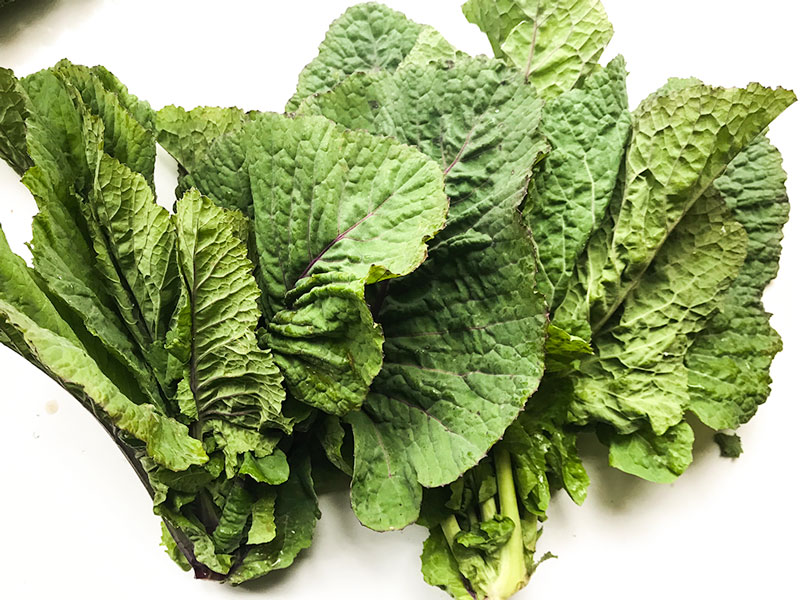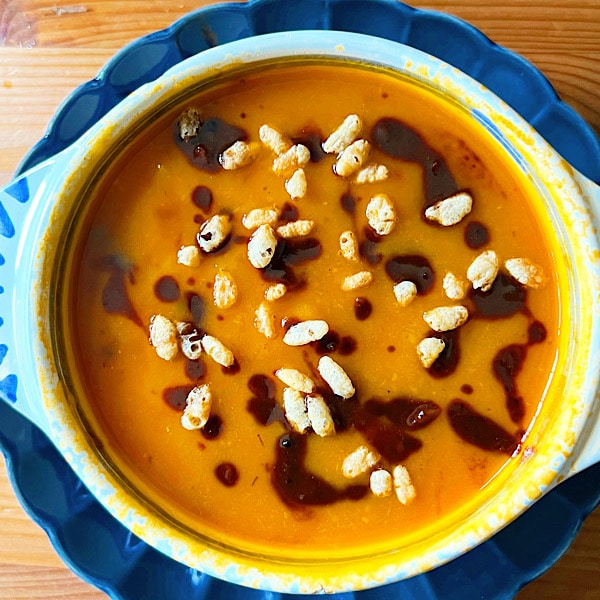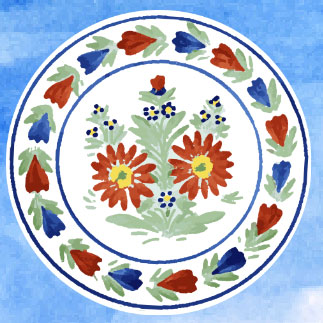Long before kale got its cult following in France, Brittany had le bricolin. Also called cow or rabbit cabbage (chou à vache, chou à lapin) because it was mostly grown to feed the livestock, le bricolin looks and tastes a lot like collard greens. For many years, it was the only dark, leafy green I could find in France. I stalked it during the winter months, grabbing fat bunches at small farmers’ market stands for 1 euro. These were used to make the Southern-style greens I missed and craved and Italian-style soups I can never get enough of. Toward the end of winter, when I knew the bricolinseason was coming to an end, I would blanch and freeze batches like some crazed hoarder. (I actually still do…) And all the while, it astounded me how few French people knew about le bricolin. Still, I knew other bricolinfans must be out there…and I even got to chat with some after I convinced a radio announcer to take on the topic for a cooking show. (The highlight of that bricolin experience was meeting Sylvain Guillemot, the super-nice Michelin-starred chef/owner at L’Auberge du Pont d’Acigné, and telling him how to make bricolin chips.)
Then came kale.
The French kale revolution began in Paris with The Kale Project, and spread to Brittany in a few short years. First, I found kale in the organic supermarket. Then, it showed up in a small local produce shop. Now it’s a regular fixture at the farm where I buy my vegetables. I bought kale regularly—and pretty much forgot about le bricolin…till kale’s popularity started to make it pricey—at least double the cost of a bunch of bricolins. (This follows in the same vein as what’s happened in the US, where leaves that were once 99¢/lb. are now neatly bundled into ¾-lb. bunches for $2.99).
When I went back to buying bricolin, I came to find a sad thing had happened in those intervening, kale-centric years: Le bricolin had all but disappeared! I can still find a few bunches if I get to the market early enough, but otherwise, everyone, everywhere has eschewed le bricolin and is now hawking kale. I even had one old guy try to tell me that the kale on his stand WAS bricolin.
It makes me want to start a campaign, à la The Kale Project, to ‘Bring Back Le Bricolin.’ The time seems right given the current climate where the French have gone crazy for kale, and forgotten/heirloom vegetables carry a certain cachet.
Blanched Bricolins/Kale/Collards/Dark, Leafy Greens (for freezing)
All dark, leafy greens (except tender spinach and Swiss chard) can be used interchangeably. They freeze well, which means you can stock up when they are particularly beautiful or on sale and always have them on hand for cooked dishes like caldo verde.
To blanch the greens: Strip off all tough stems, but leave the leaves whole. Drop them into a large pot of boiling water (salted or unsalted…your choice), then cover. Once the water has returned to a rolling boil, drain the greens and rinse under cold water. Drain well (I let the colander sit over the sink for about ½ hour) before packing into 2- or 4-cup portions and freezing. These just-blanched greens also make a great salad when tossed with a vinaigrette.



Leave A Comment